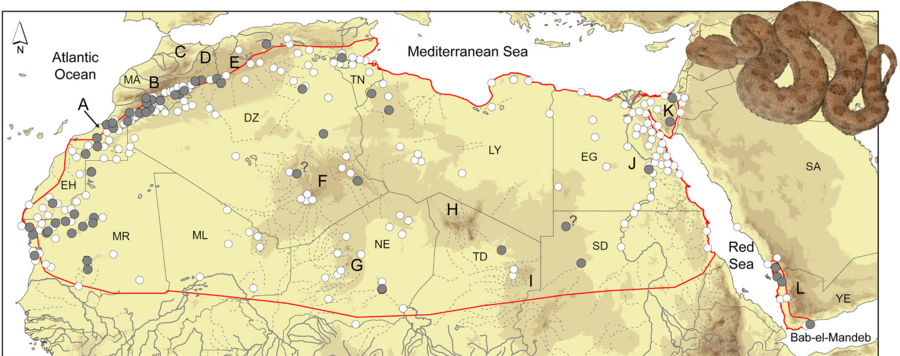
Historical biogeography of the Saharan horned viper enlightens past dynamics of hyperarid desert habitats
Hyperarid habitats comprise the most dominant and harsh portion of the Sahara Desert, yet how local biotas have responded to paleoclimatic shifts and landscape heterogeneity remains unclear. Here, we assess the historical biogeography of Cerastes cerastes, a conspicuous but poorly known vertebrate inhabiting the hyperarid Sahara, to understand the links between intermittent and stable climatic suitability and patterns of genetic diversity and differentiation in these extreme environments. We combine phylogeographic and ecological modelling tools using a comprehensive species dataset, which includes DNA samples (n = 62) and occurrence records (n = 557) covering most of its range. We show that paleoclimatic oscillations were major evolutionary and biogeographic drivers in C. cerastes, which exhibits different levels of intra-specific diversity and allopatric lineage structuration across the desert. High lineage richness in the north-western Sahara contrasts with an overall lack of genetic diversity throughout the central and eastern Sahara. Climatic refugia along the desert’s periphery and around mountain patches harbour single endemic lineages, stressing the links between stable climatic conditions and population isolation and divergence. Increasing climatic suitability during historical arid phases prompted widespread connectivity across the desert. This study lays the groundwork for better understanding the historical dynamics of the hyperarid Sahara.






